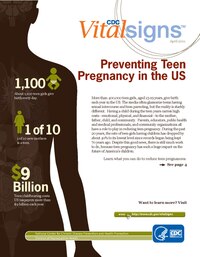
Photo from wikipedia
PURPOSE OF REVIEW This review will address the need for adolescent contraception, compare the benefits of long-acting reversible contraceptives (LARC) with non-LARC methods, discuss unique barriers to LARC for adolescents,… Click to show full abstract
PURPOSE OF REVIEW This review will address the need for adolescent contraception, compare the benefits of long-acting reversible contraceptives (LARC) with non-LARC methods, discuss unique barriers to LARC for adolescents, and provide physicians with latest recommendations for counseling adolescents on contraception. RECENT FINDINGS The United States has the highest adolescent birth rate of any developed country at 18.8 births per 1000 females aged 15-19 years. This rate is more than double the rate in France (9/1000) and Spain (9/1000), and nearly 1.6× the rate in the United Kingdom (12/1000). As the most effective and user-independent methods of contraception, LARC have the potential to notably lower the adolescent birth rate. However, despite higher rates of patient satisfaction and continuation with LARC, adolescent LARC usage remains low. Just 4.3% of all American females aged 15-19 years who reported using some form of contraception between 2006 and 2010 used an intrauterine device (IUD) or subdermal implant, compared with 96% who used the male condom and 56% who used the oral contraceptive pill (OCP). Barriers to adolescent LARC usage include patient and provider misinformation, high upfront costs, and issues of confidentiality and consent. SUMMARY LARC methods are recommended by most reproductive and adolescent healthcare organizations as the most effective contraceptive options for adolescent females. Pediatricians should provide their adolescent patients with up-to-date information on all options for contraception, including risks and benefits. It is important for them to remove their own personal biases when counseling patients and work to reduce barriers to LARC for adolescent females.
Journal Title: Current Opinion in Pediatrics
Year Published: 2019
Link to full text (if available)
Share on Social Media: Sign Up to like & get
recommendations!